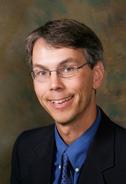New Thymus Tissue May Be Key to Preventing Transplant Rejection

A close-up image of a differentiated thymic epithelial cell.
UC San Francisco immunologist and stem cell scientist Mark Anderson, MD, PhD, came up with a novel idea to prevent transplanted organs from being rejected. The California Institute for Regenerative Medicine thought it was an innovative concept and recently awarded him a new basic biology award, totaling almost $1.2 million.
The goal is to generate thymus tissue that can be used to raise immune cells that will better tolerate donated organs. The thymus is a gland that sits at the top of the chest beneath the breastbone. It trains our immune cells to tolerate our own tissues, instead of destroying them as if they were foreign invaders.
Unfortunately, an organ transplant recipient rejects donated tissue, in part, because the thymus never trained the immune system to recognize the transplanted tissue as “self.”

Mark Anderson, MD, PhD
Anderson and colleague Matthias Hebrok, PhD, a stem cell researcher who heads the UCSF Diabetes Center, already have been able to grow immune cells known as T lymphocytes – or T cells – using the strategy, a milestone they reported last year in the journal Cell Stem Cell.
“By growing a new thymus from stem cells matched to transplanted tissues, we can condition the immune system to be tolerant to the transplant and to avoid chronic immunosuppression,” said Anderson, the Robert B. Friend and Michelle M. Friend Endowed Chair in Diabetes Research with the UCSF Diabetes Center.

Matthias Hebrok, PhD
Anderson and Hebrok created the first functioning human thymus tissue from embryonic stem cells in the laboratory. They showed that, in mice, the tissue can be used to foster the development of white blood cells the body needs to mount healthy immune responses and to prevent harmful autoimmune reactions.
“We have proved in principal that we can generate T cells,” Anderson said of the mouse studies. “Now we want to show that this approach can be used to improve the success of organ transplantation and stem cell transplantation.”